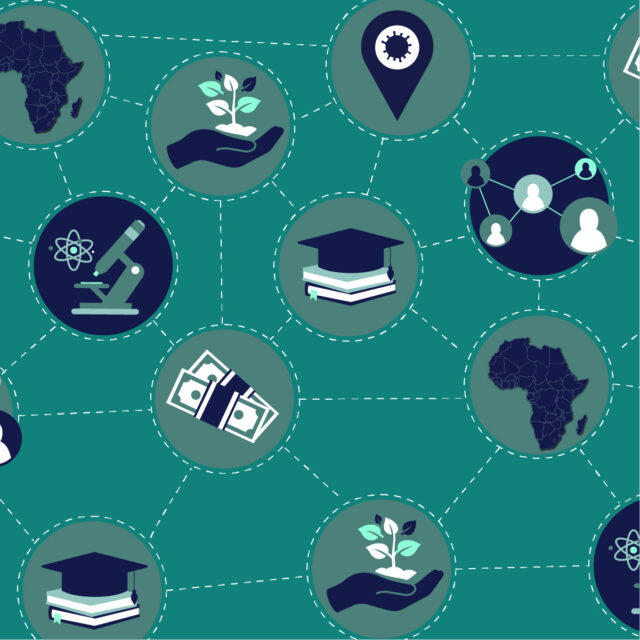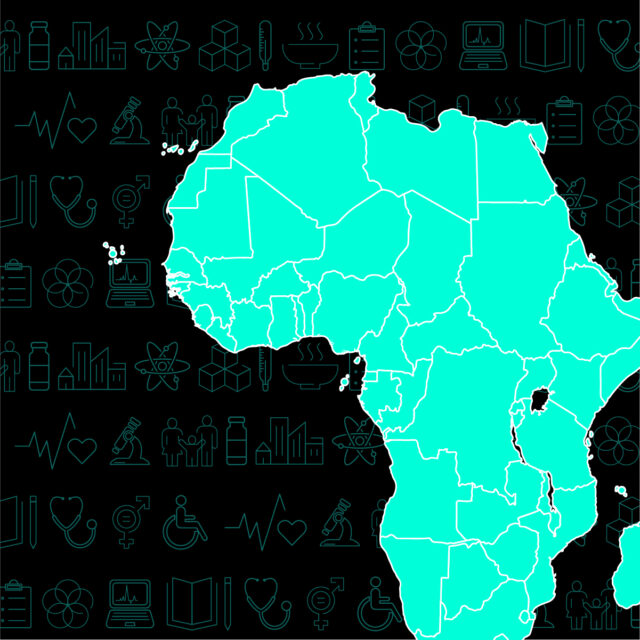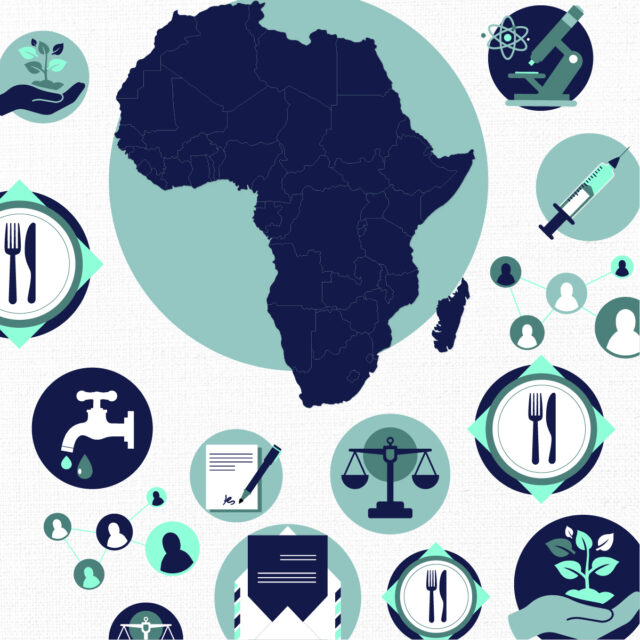Top news
Desperate need: South Sudan is experiencing the worst refugee crisis in Africa. Triggered by floods, famine, and political violence, 2 million people have been displaced and 2.3 million people are currently refugees. 8.9 million people are in “desperate need” of humanitarian aid. Meanwhile, the $10 million in aid and 80,000 bags of rice intended for those who need it have instead been “looted” by political elites, according to a UN official. Rape and sexual violence are being used as “spoils of war” and tools of conflict along ethnic lines. The UN Commission on Human Rights in South Sudan has called for full implementation of the negotiated peace agreement. But there appears to be little hope for that, as “nearly all the UN’s risk factors for atrocity crimes are now present in South Sudan.”
Rising hunger tide: Russia’s war in Ukraine could send another 40 million people into extreme poverty. Increases in food and fuel prices are already having impacts: South Africa is expecting a shortage of grain and fuel prices have increased R21 ($1.42) per liter. Hunger is rising in the Middle East and North Africa, where already 1 in 3 people have insufficient food. And since Russia’s war started, an additional 23 million people don’t have enough food. The food crisis threatens to put further economic strain on low-income countries hit hard by the pandemic. Experts warn that knee-jerk export bans must be avoided, along with sanctions on food and fertilizer, if the world is to manage the broader consequences of the war. Meanwhile, the African Development Bank announced $1 billion to develop heat-tolerant wheat varieties to curb Africa’s dependency on Russia’s wheat. And a new fertilizer plant in Nigeria could help boost supply in the long term. We’ll take good news where we can find it these days.
Food for thought: Somalia currently has the highest reported insufficient food consumption rate in Africa. 1.4 million children under age 5 in Somalia will be acutely malnourished if the country doesn’t receive rainfall in April. Forecasts predict it won’t, which could make the current drought the worst in Somalia’s history. That would leave more than 4 million people struggling to find food. According to ONE’s Africa COVID-19 Tracker, 72% of the population already suffers from insufficient food consumption. In Angola, the worst drought in 40 years is threatening a famine and driving thousands to flee to neighboring Namibia. Meanwhile, the Partnership for Inclusive Agricultural Transformation in Africa (which was meant to increase incomes and food security by 2021) failed to meet its goals. Financing issues appear to be the primary reason, but some are calling for the program to be defunded. Sounds like an odd solution when under-funding is a core part of the problem.
What the flood: As Somalia faces drought, Kenya is drowning: the country’s massive lakes are slowly expanding and, until recently, no one except local residents seemed to be paying attention. Accidental research by a geologist has found flooding across all of Kenya’s great lakes, including Lake Victoria (the largest in Africa). Lake Nakuru increased by an incredible 50%. During the pandemic, 11 closed schools were swallowed whole by the expansion of Lake Baringo before they could reopen. Many others had to relocate to avoid the rising water. Climate change’s impacts are being felt across Africa, and will only get worse.
Restriction override: South Africa has lifted many of its COVID-19 restrictions, allowing for larger gatherings and dropping outdoor mask requirements and PCR test requirements for visitors. It did, however, maintain the harshly criticized National State of Disaster. Critics accuse President Cyril Ramaphosa of maintaining the State of Disaster – which would allow him to swiftly re-impose restrictions – as “nothing more than a power grab”. The loosened restrictions, which parallel European and North American countries, were spurred by dropping death, hospitalization, and case rates in South Africa, and in light of research that 60-80% of the population has some form of immunity. But as China recently learned, outbreaks can swiftly cross regions and drive virus resurgences.
Test-a-thon: China lifted COVID-19 restrictions in Shenzhen after orchestrating rapid-fire testing of the city’s 17 million residents, just days after shuttering businesses. While normal production has resumed, supply chain experts warn that disruptions could continue. China’s zero-tolerance COVID-19 policy has a much lower threshold for an “outbreak” than other countries: China’s lockdown occurred after 66 new cases. In contrast, South Africa logged 1,267 new cases on 22 March. Experts are anticipating more shutdowns in Shenzhen as Omicron’s BA.2 variant sweeps the globe.
In the dark: Power outages in Nigeria have left some with no electricity for up to five days. Reports include outages in hospitals, which could have knock-on effects for vaccines that require refrigeration. The national grid collapse began last week, triggered by limited access to petrol and a 200% increase in diesel prices. Supply issues are impacting countries across Africa as a result of Russia’s war in Ukraine. Businesses have reduced trading hours and Nigeria’s national airline only has three days’ worth of fuel left. The Ministry of Power blamed part of the problem on infrastructure issues, while others have blamed it on government corruption. The national grid has collapsed 130 times since it was privatized in 2013, resulting in regular power cuts that sometimes last months.
Sky-high: Ghana’s interest rates have hit their highest point in 20 years, while the cedi has depreciated by 17%. In an attempt to tackle inflation, the Bank of Ghana increased its main lending rate by 250 points to 17% – over twice what a Reuters economists’ poll had predicted. The country is in the midst of a debt crisis, with total public debt equal to 80% of GDP. This stems from high energy sector debt, compensating the customers of failed financial institutions, and the economic impacts of the pandemic. Russia’s war in Ukraine is likely to further Ghana’s trade deficit. Still, the central bank says interest rates will more than halve by the end of the year. Elsewhere, the Egyptian pound has been devalued by 14%.
The numbers
- 11 billion: the total number of COVID-19 vaccine doses administered globally during the pandemic, while 2.8 billion people mostly in lower-income countries remain unvaccinated.
- 50%: the amount the World Food Programme has had to cut food rations since the start of the war in Ukraine.
- 100%: the portion of Benin and Eritrea’s wheat supply that comes from Russia and Ukraine.
More reads
- Scientists are trying to understand why Africa’s COVID infection and death rates are so low – or if that’s even true. (The New York Times)
- The surprising link between internet access and COVID-19 deaths. (Vox)
- Why Africa should not help Putin whitewash his crimes in Ukraine. (Al Jazeera)
- World Food Programme Chief David Beasley gets frank about the impact of the world’s mounting crises. (Twitter)
- Vanessa Nakate tells us how girls’ education will help solve the climate crisis. (The Economist)
- How the international community should respond to the crisis of girls’ education in Afghanistan. (Malala Fund)
- In partnership with Bloomberg, journalist Mapi Mhlangu sat down with the CEO of the South African Social Services Agency to talk about how it administered COVID-19 pandemic social relief.
- ONE France brought together presidential candidates and their representatives to discuss their plans for ending extreme poverty and tackling today’s biggest issues.
- David McNair analyses what Putin’s war will mean for the Europe-Africa Partnership.
- Rasna Warah explores how rising food, fuel, and fertilizer prices could ignite political tensions in Africa.



